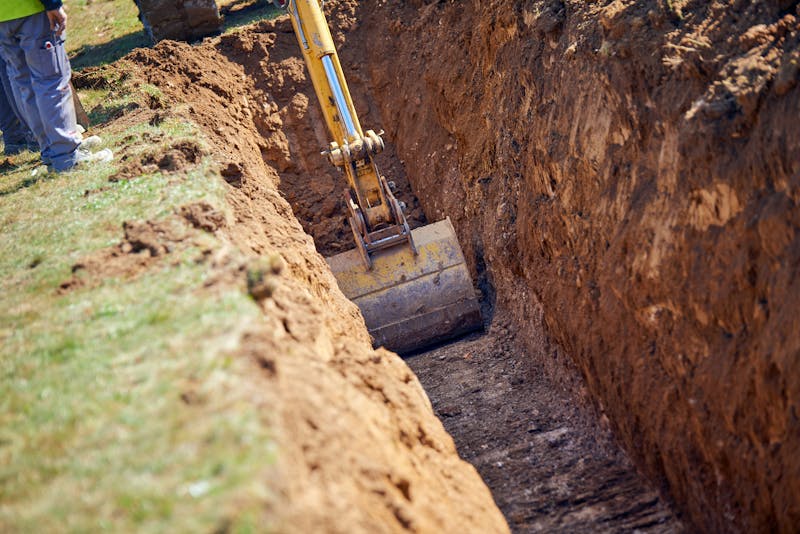
Trench work is one of the most dangerous tasks on a construction site. Every year, workers are seriously injured or even killed by cave-ins, equipment rollovers, or collapsing trench walls. One of the most common and deadly hazards is what OSHA classifies as "caught-in or caught-between" accidents. These incidents occur when a worker is crushed, trapped, or squeezed between objects or equipment.
At The Law Offices of Michael S. Lamonsoff, we’ve seen firsthand how devastating these accidents can be. Our clients often suffer catastrophic injuries because someone failed to follow the safety rules. If you work in or around trenches, here’s what you need to know to stay safe—and what to do if the unthinkable happens.
Understanding Caught-In and Caught-Between Hazards
Caught-in or caught-between accidents in trenching usually involve:
- Trench wall collapses (cave-ins)
- Moving equipment or heavy machinery
- Falling loads or collapsing structures
- Loose soil or shifting materials
These situations can lead to traumatic injuries like crush injuries, broken bones, suffocation, amputations, and fatalities.
Essential Safety Tips to Prevent Trench Accidents
Never Enter an Unprotected Trench
No trench deeper than 5 feet should ever be entered without protective systems like:
- Shoring (support systems to prevent collapse)
- Shielding (trench boxes)
- Sloping (cutting trench walls at an angle)
Always Inspect Before Entry
Trenches should be inspected daily, as well as after every rainstorm or equipment operation nearby, by a competent person. No exceptions.
Stay Clear of Heavy Equipment
Backhoes, loaders, and dump trucks pose a major hazard if you're working nearby. Always remain in the operator’s line of sight and wear high-visibility gear.
Use Safe Access Points
Workers must enter and exit trenches using ladders, ramps, or stairs. These should be located no more than 25 feet from any worker.
Check for Underground Utilities
Before digging, utilities must be located and marked. Contact with gas, electric, or water lines can cause explosions, electrocution, or flooding.
Know the Weather Conditions
Rain, snow, and freezing temperatures weaken trench walls. Avoid working in trenches when the weather poses an added risk.
Be Trained and Empowered to Say No
Workers should be trained in trench safety and empowered to speak up if conditions are unsafe. Employers are legally obligated to provide a safe work environment.
What to Do If You're Injured in a Trench Accident
Even when precautions are taken, accidents still happen, often due to someone else's negligence. Here's what you should do:
- Seek Medical Help Immediately
- Report the Incident to Your Supervisor
- Document the Scene (if possible)
- File a Workers' Compensation Claim
- Contact a Construction Accident Attorney
You may be entitled to more than workers’ compensation, especially if a contractor, property owner, or equipment manufacturer contributed to your injuries. That’s where we come in.
Why Hire Michael "The Bull" Lamonsoff?
Michael S. Lamonsoff is one of New York’s most aggressive and experienced construction accident attorneys. Known as "The Bull" for a reason, he doesn’t just file claims; he prepares every case for trial and goes head-to-head with insurance companies, contractors, and corporate legal teams.
Our team has recovered more than $500 million for injured clients. With over 1,400 five-star reviews, multilingual service (English, Spanish, and Portuguese), and more than 150 years of combined litigation experience, The Law Offices of Michael S. Lamonsoff is the firm construction workers trust when everything is on the line.
Call Us If You've Been Hurt on the Job
Trench accidents are preventable, and when they happen, someone should be held accountable. Let us fight for the compensation you deserve.
Call now for a free consultation. You're not just hiring a lawyer. You're putting your case in the hands of a fighter. You're hiring The Bull.


